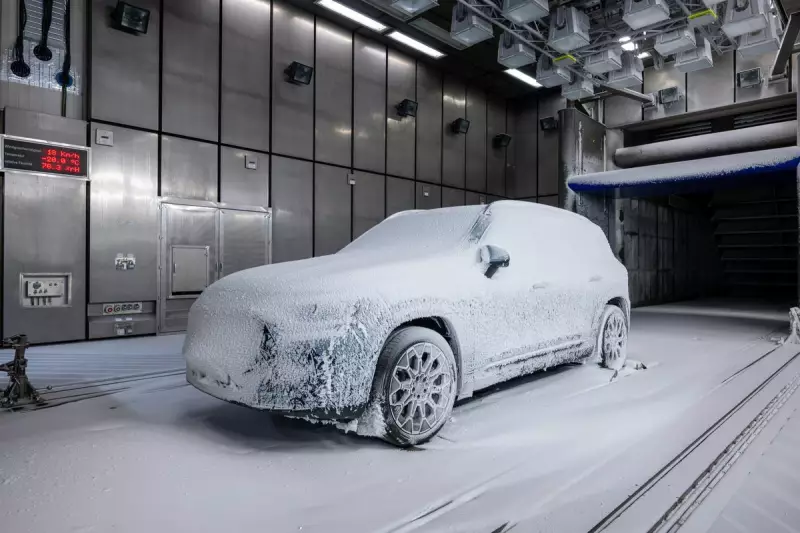
Ahead of its highly anticipated global debut on December 8, Mercedes-Benz has been rigorously testing its second-generation GLB SUV, pushing the vehicle to its absolute limits in some of the world's most extreme simulated environments.
Conquering the Deep Freeze
At the advanced Mercedes Technology Centre in Sindelfingen, Germany, engineers have recreated arctic conditions to assess the GLB's cold-weather prowess. The facility's cold chamber can simulate temperatures as low as -40°C and features a powerful wind tunnel that whips snowflakes towards the vehicle at speeds of up to 200 km/h.
Within this frozen landscape, sophisticated test rigs, including a rolling road for 4MATIC models, put every component through its paces. Engineers meticulously check for potential issues, such as whether swirling snow could block vital air intakes—a genuine risk on icy roads.
In a critical test conducted between -15°C and -20°C, the SUV's heating system had to prove it could rapidly defrost an icy windscreen. Mercedes-Benz reported that the GLB passed "impressively", clearing the ice using only the defrost setting without needing the wipers.
The Cutting-Edge Tech Behind the Comfort
A key to this efficiency is a new heat pump derived from the visionary Vision EQXX technology program. This innovative system draws warmth from three separate sources: the drive system, the battery, and the ambient air. This intelligent design consumes roughly a third of the energy of a conventional auxiliary heater, a crucial advantage for its expected all-electric drivetrains.
The entire testing process, from refuelling to charging, can be conducted within the climate tunnels, which cover a massive 70m x 60m area. Technicians monitor and control every parameter, from humidity to wind speed, from a central control room.
From Icy Blasts to Scorching Heat
But the challenge doesn't end with the cold. The GLB also faced the opposite extreme in a specialised heat chamber, where temperatures can soar to a blistering +60°C.
To replicate the sun's intense radiation, a solar simulation system with 32 lamps bathes the vehicle in light, with intensity levels matching the harsh sunshine found in remote deserts like Death Valley. Another tool, the "Hot Road," simulates scorching summer asphalt with surface temperatures adjustable between 50-70°C.
This controlled, reproducible testing allows Mercedes-Benz to close the gap between digital simulation and real-world performance, ensuring superior vehicle quality before a single wheel turns on a public road.
What Australian Drivers Can Expect
The new GLB, set to arrive in Australian showrooms in the second half of 2026, promises a significantly upgraded experience. Mercedes-Benz describes a "reimagined" cabin with a high-tech interior, improved headroom and legroom, and a panoramic roof featuring heat-insulating glass.
In a first for the segment, this roof boasts adjustable transparency, allowing it to switch from clear to a private, milky opal in mere milliseconds.





